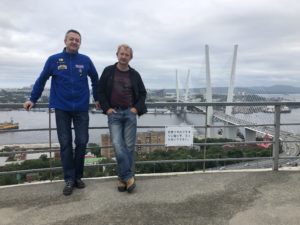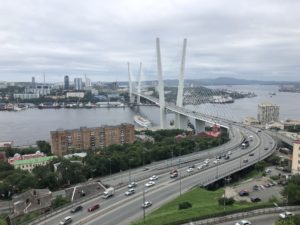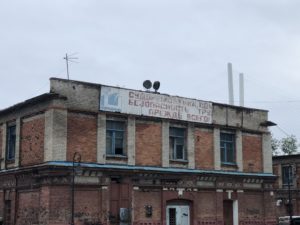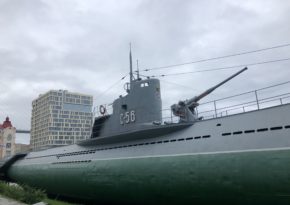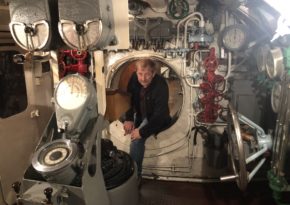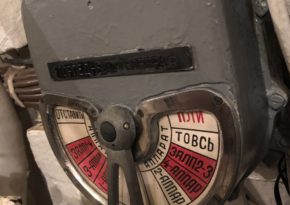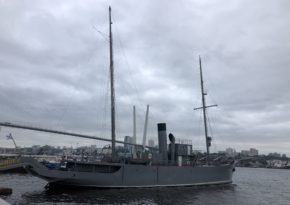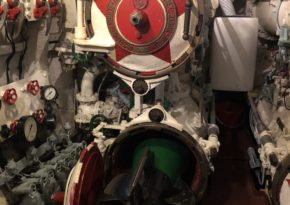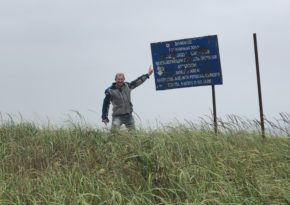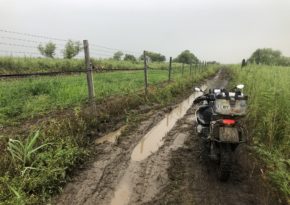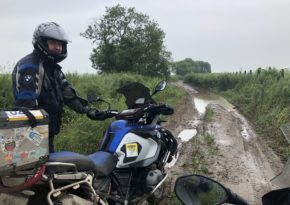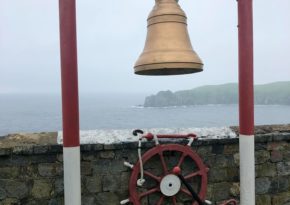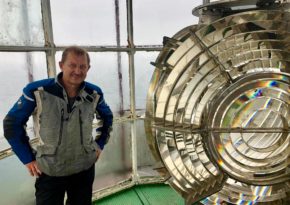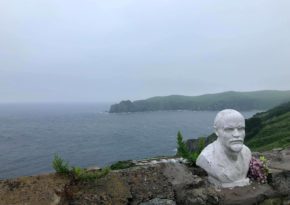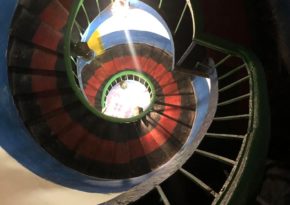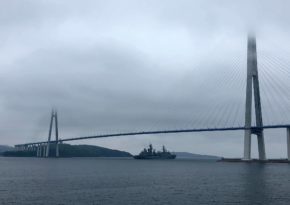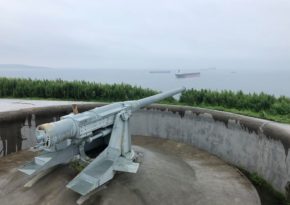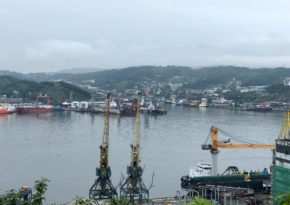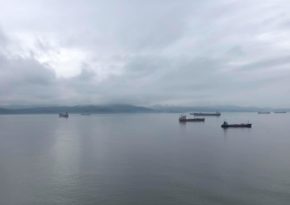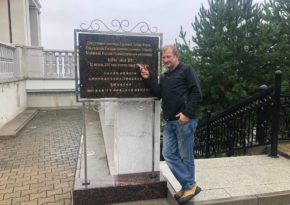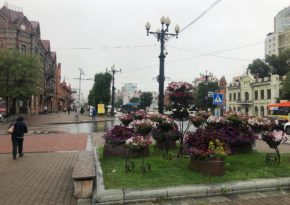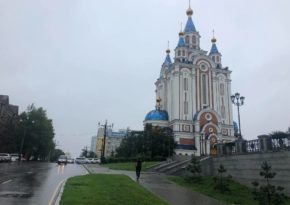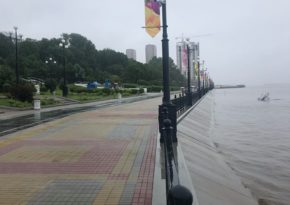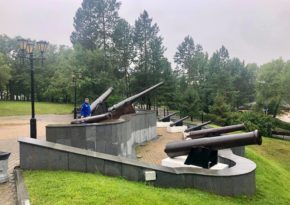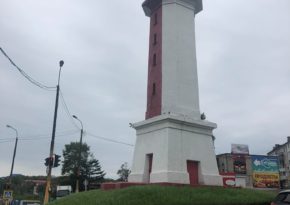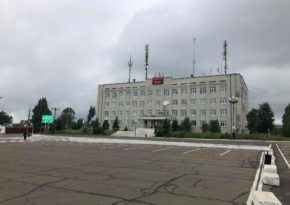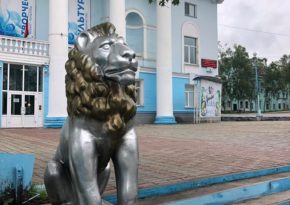A motorbike journey to the Russian Far East
IRKUTSK
Have you ever been on a tour to a garbage dump or, in other words, a landfill MSW?
When I was walking around Irkutsk, in which I began to feel home, I heard someone calling my name from behind. I looked back and saw a smiling man walking towards me.
"Hi, Andrey! How did you turn out to be here?"
"Hi!", I replied, trying to recall where I had seen this man.
"I'm Dmitry Tyutrin, we are friends on Facebook", he introduced himself.
This is the second time in this wonderful city I have met my online friend absolutely by chance! That's fantastic!
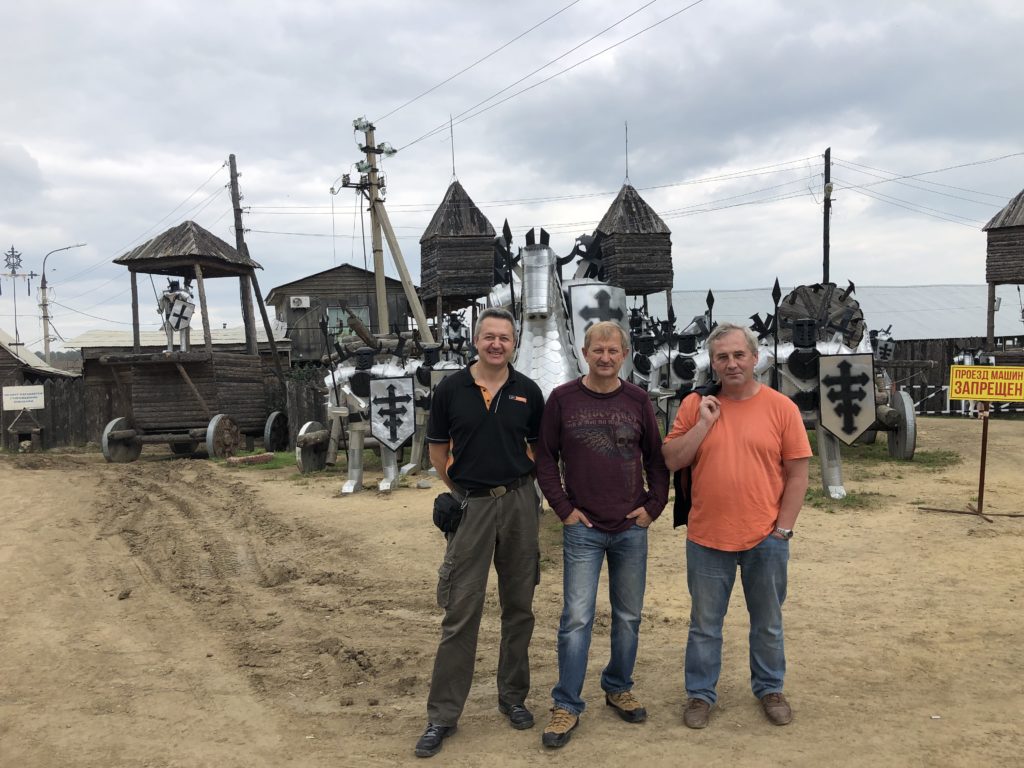
10 minutes later we have already negotiated on that the following day Dima would be our personal guide around Irkutsk and its surroundings. And since Oleg and I were absolutely free until the evening of the next day, we agreed without hesitation. Moreover, Dmitry promised to surprise us and, wow, he actually did it!
When we drove up to this amazing place, I could not believe that it was a real operating garbage dump! It had better been described as a large open-air museum of things found in the loads of waste. I doubt there's anything you wouldn't find here! Things here range from old Soviet buses and cars to Typhoon vacuum cleaners, from Zinger sewing machines to Electronic cassette recorders. The museum itself is surrounded by a high fence of sharp logs-stakes with observation towers. The entrance to it is guarded by dozens of iron knights, some horrific Orcs on horseback and other evil spirits. Nearby, in the field, there is a huge amount of military equipment: German destructed tanks and Russian contemporary tanks, the tails of planes with swastikas sticking out of the ground, tractors and steam locomotives. And behind all this splendor a huge mound of garbage towered, over which eagles and crows were circling.
Superb!!!
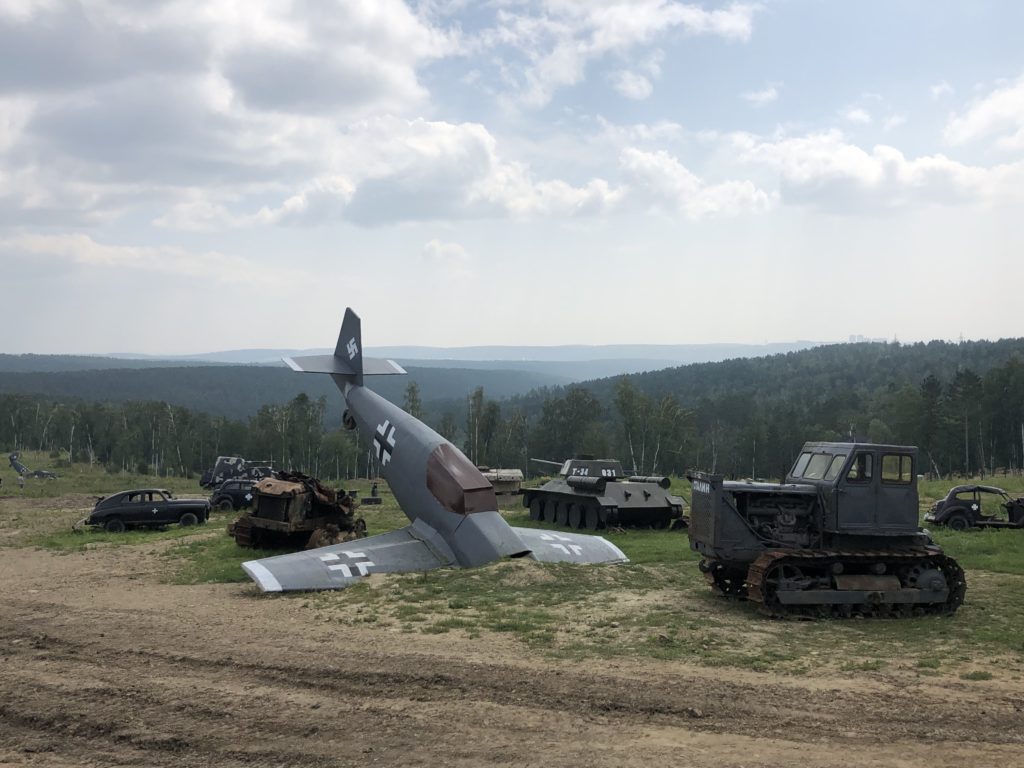
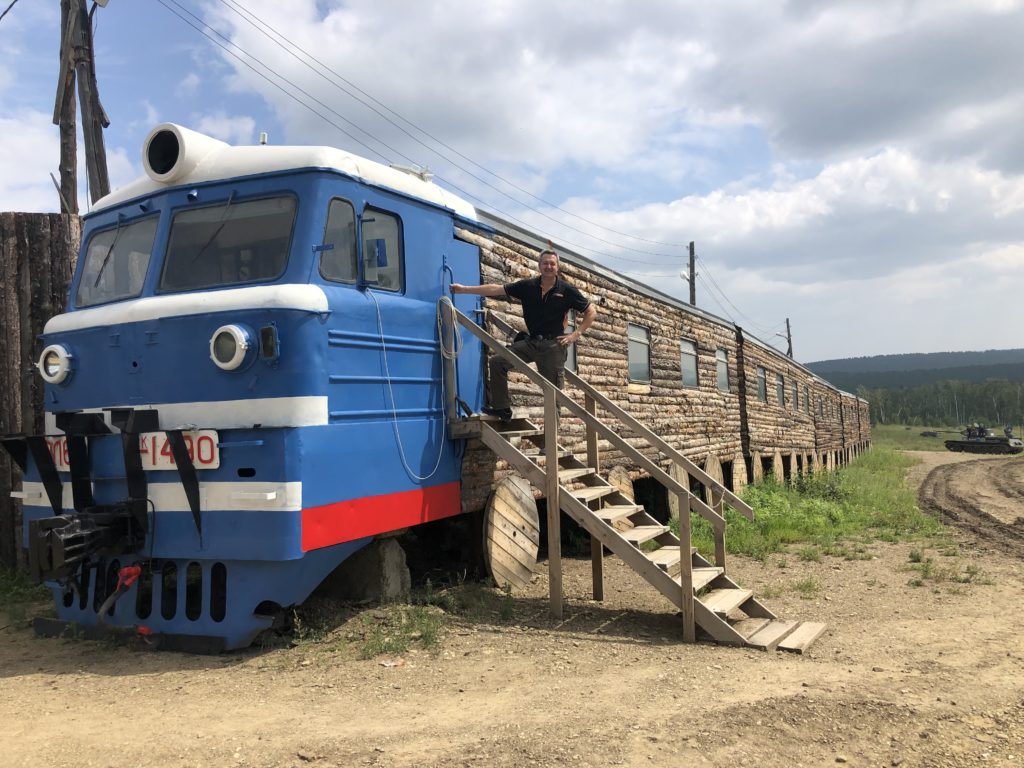
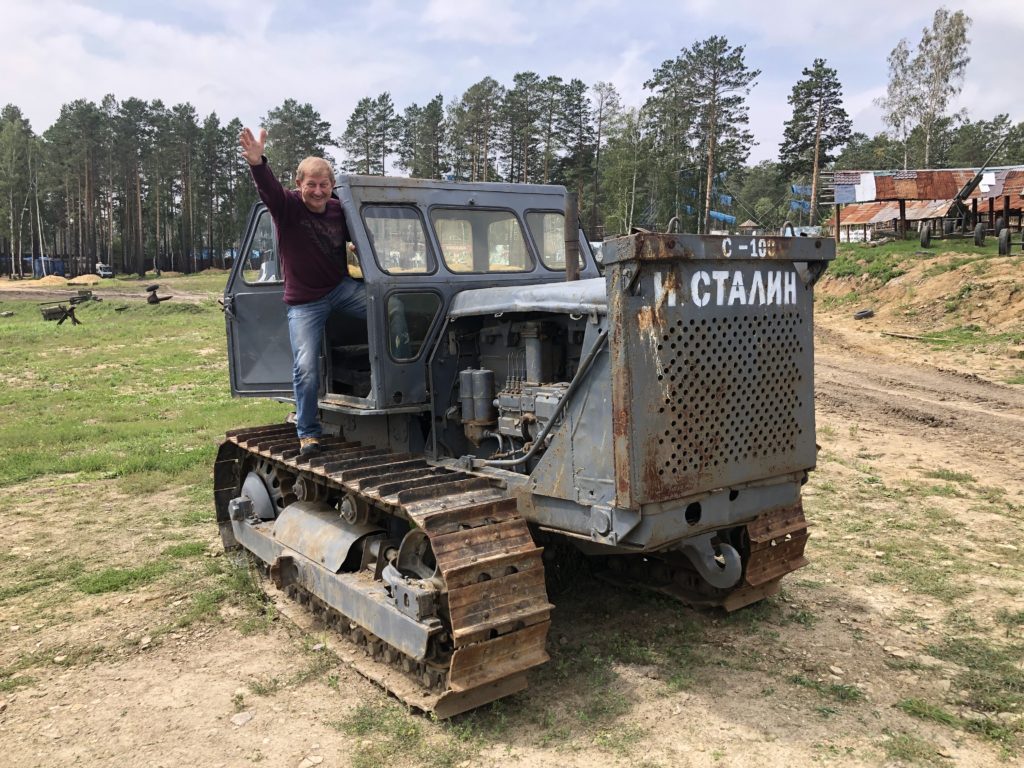
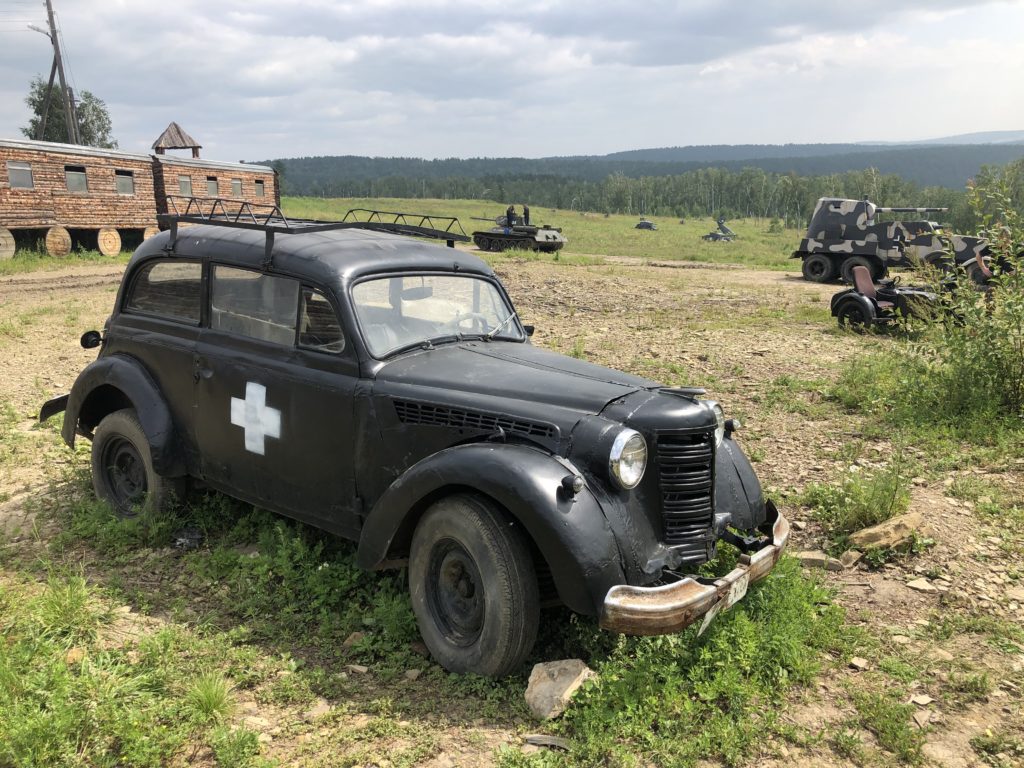
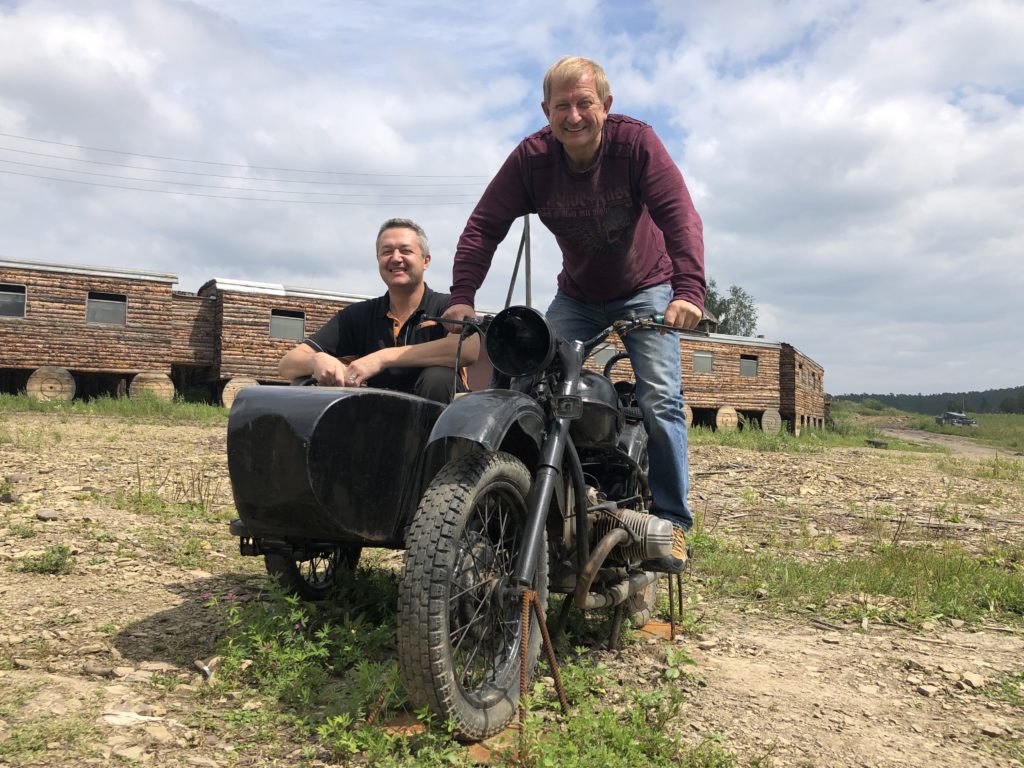
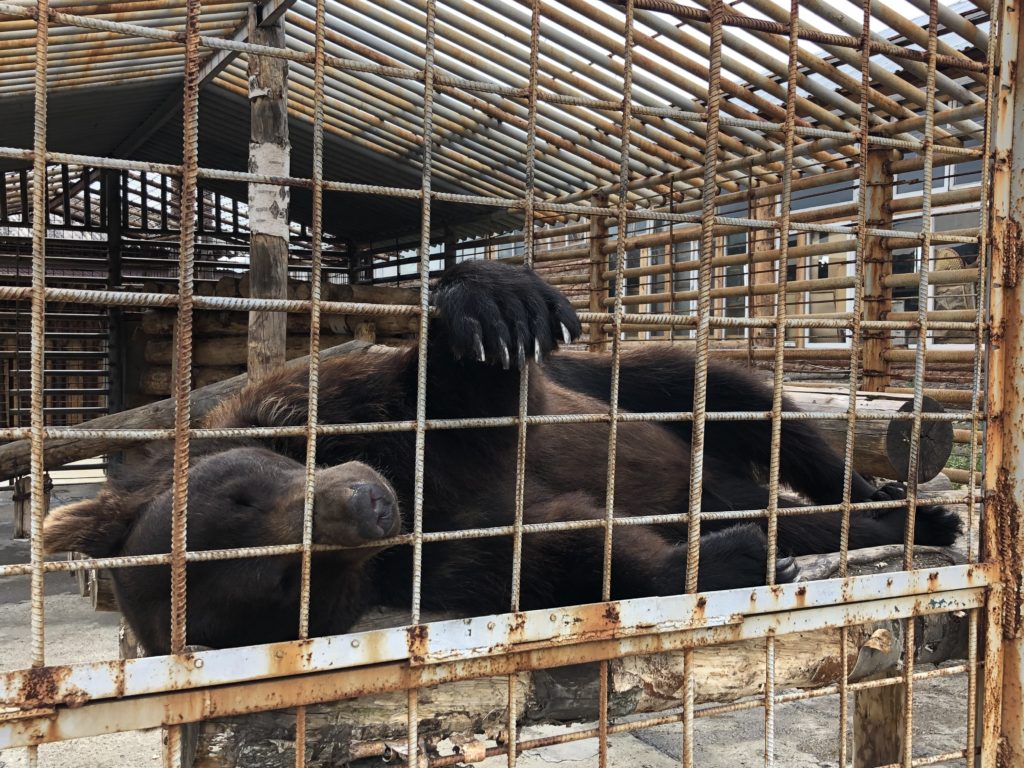
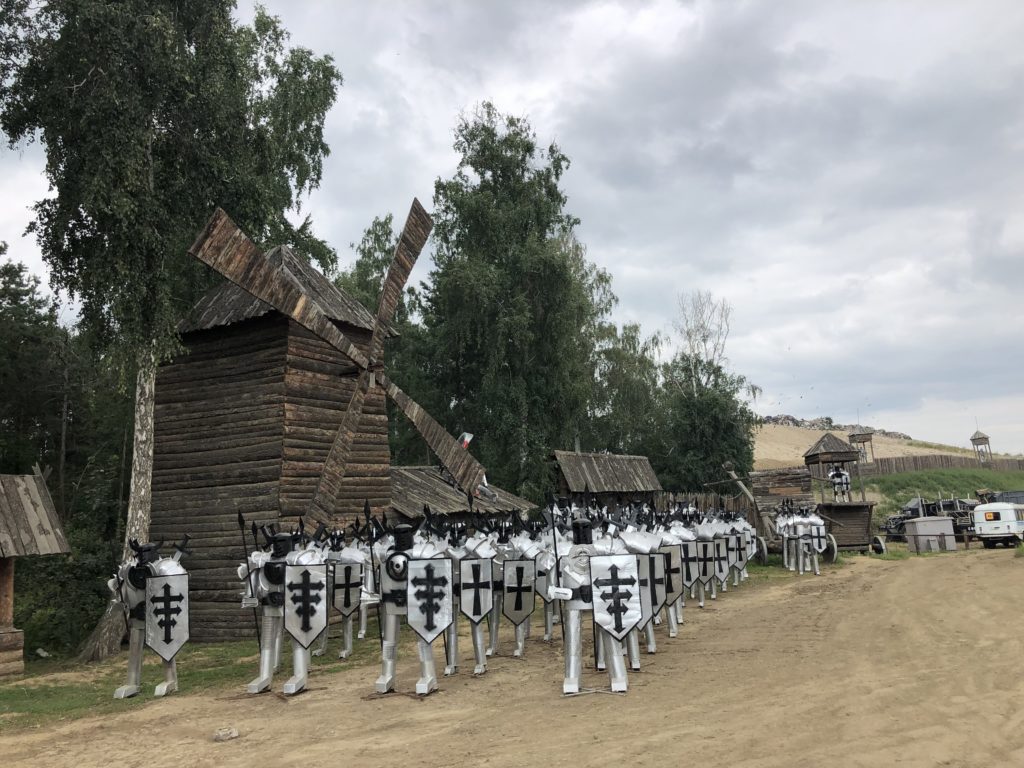
On that day we also managed to get to Lake Baikal. We arrived in the village Listvyanka, where we had expensive shit buuz for lunch (that's the name of big Buryat dumplings), and visited a great museum of wooden architecture.
And tomorrow we're going to ride the motorbikeys across Vladivostok. Our adventure to the most remote part of Russia will begin there!
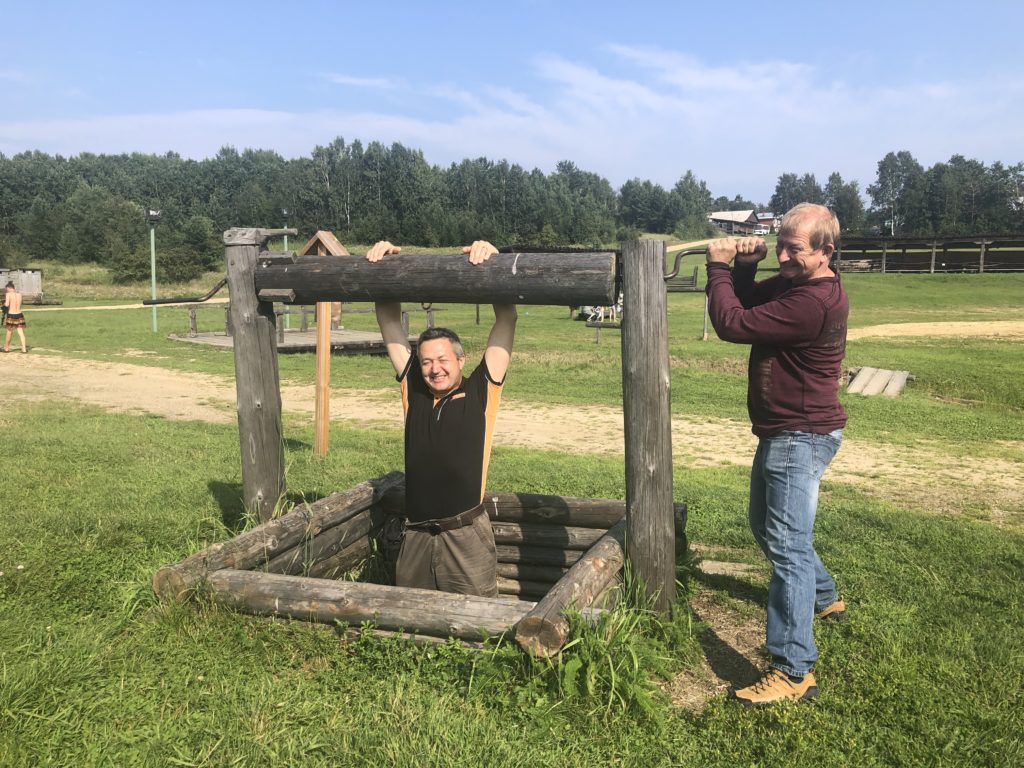
VLADIVOSTOK
The green S7 plane dived into the white-milk fog and, having pierced the thick feather bed of clouds, landed smoothly on the runway of Knevichi airport.
Vladivostok greeted us with a warm downpour. "This year we didn't have a normal summer", the locals said.
"Same", I answered sadly, having looked at the weather forecast for the next week.
We checked in a hotel, where a lot of the Chinese and Koreans stayed. After that we went to get our motorbikes, which the transportcompany "ПЭК" delivered in perfect condition even a day earlier than it had been promised. After lunch the rain calmed down a little so we had an opportunity to walk around the centre of Vladivostok.
My first impressions are the following: it is not like other big cities in Russia, it cannot be confused with Tambov or Kursk, for example. The proximity of the sea and the mountainous terrain has been reflected not only in the climate but also in the architecture. There are beautiful cable-stayed bridges, the port, military and civilian vessels docked at the piers, a tiled embankment, high-rise buildings made of glass and concrete, which take place side by side with slums, broken borders and terrible asphalt in some alleys.
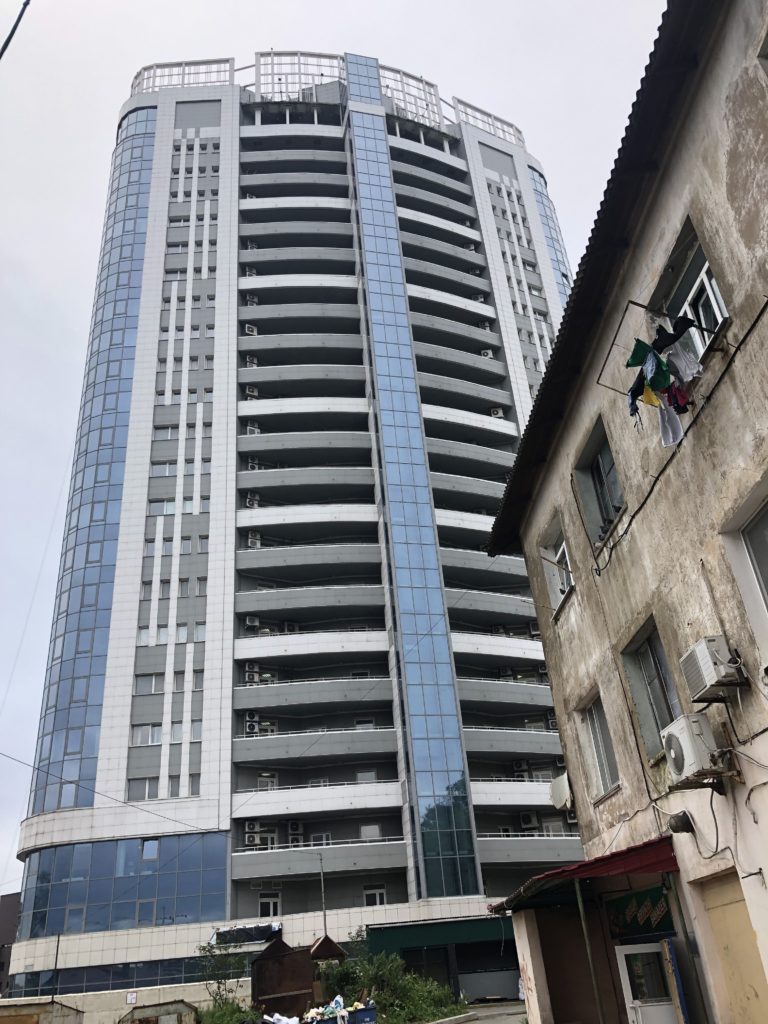
There are many tourists from China. This fact immediately catches your attention. You can often see hieroglyphic advertising posters and signmarks in the streets. The tourism industry is clearly focused on the Chinese and it is understandable. A ticket from Moscow to Vladivostok costs the same as a week-long vacation in Turkey or Tunisia. No need to list down the further prices.
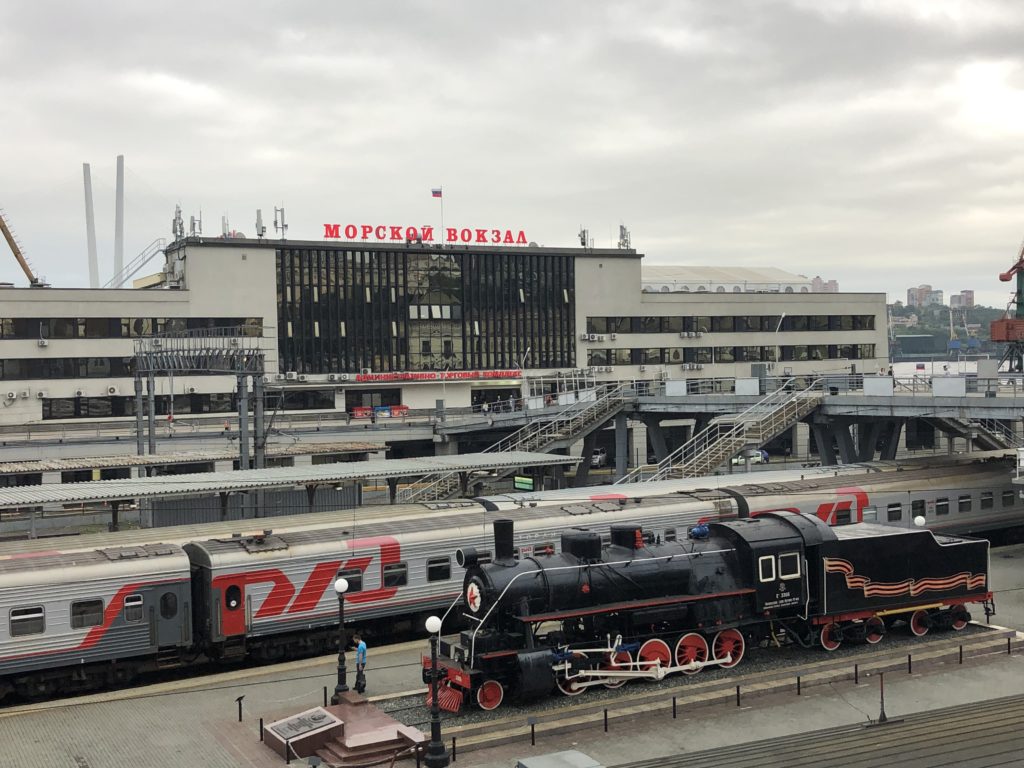
Anyway, Vladivostok is a Russian city and the people here are wonderful. Everything is familiar and comfortable here. Let's see what's going to be next…
THE BORDER
If you go strictly south from Vladivostok, then after 220 km the asphalt will end and, after another 40 km along the broken grader, you will arrive at the village Khasan, which is the last settlement located in the south of Primorye region. And after going a couple more kilometres you will run into a high barbed wire fence. This is the border. Then, five minutes later a man in uniform will drive up to you and ask you to show your passport. After looking through your ID, he will politely ask a few necessary questions and, having made sure that you are not a Chinese spy, he will kindly agree to take a picture of you with a small stele in the background. It has a form of a triangular pillar and indicates the place where the borders of three states: Russia, China and the DPRK cross at one point.
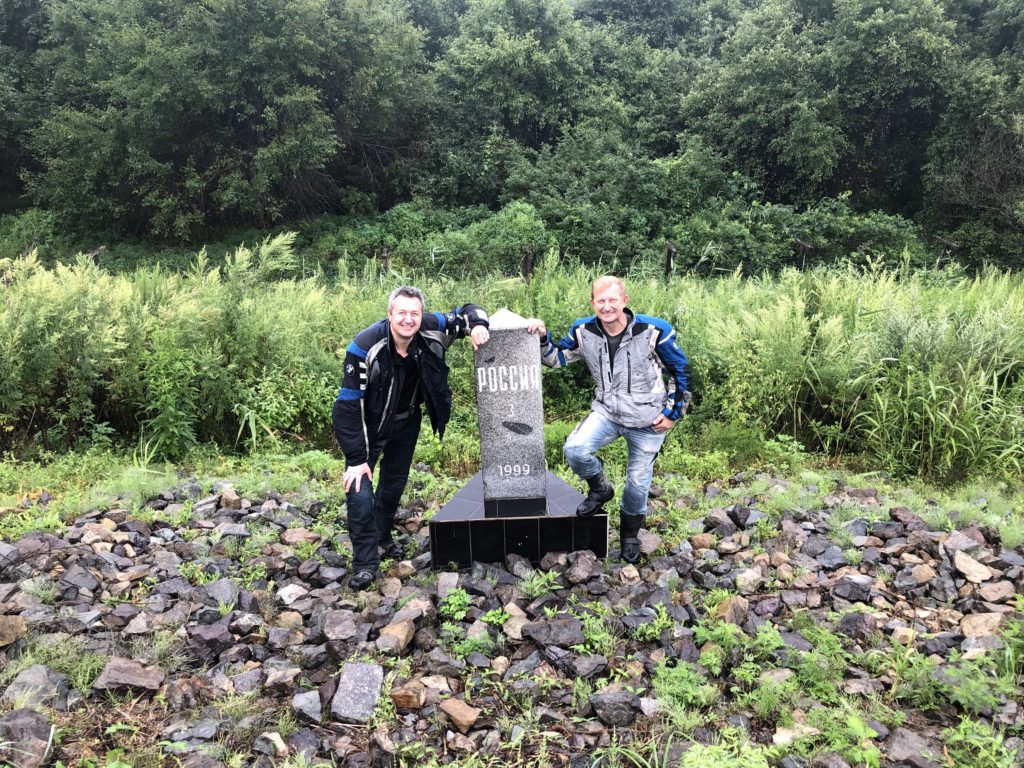
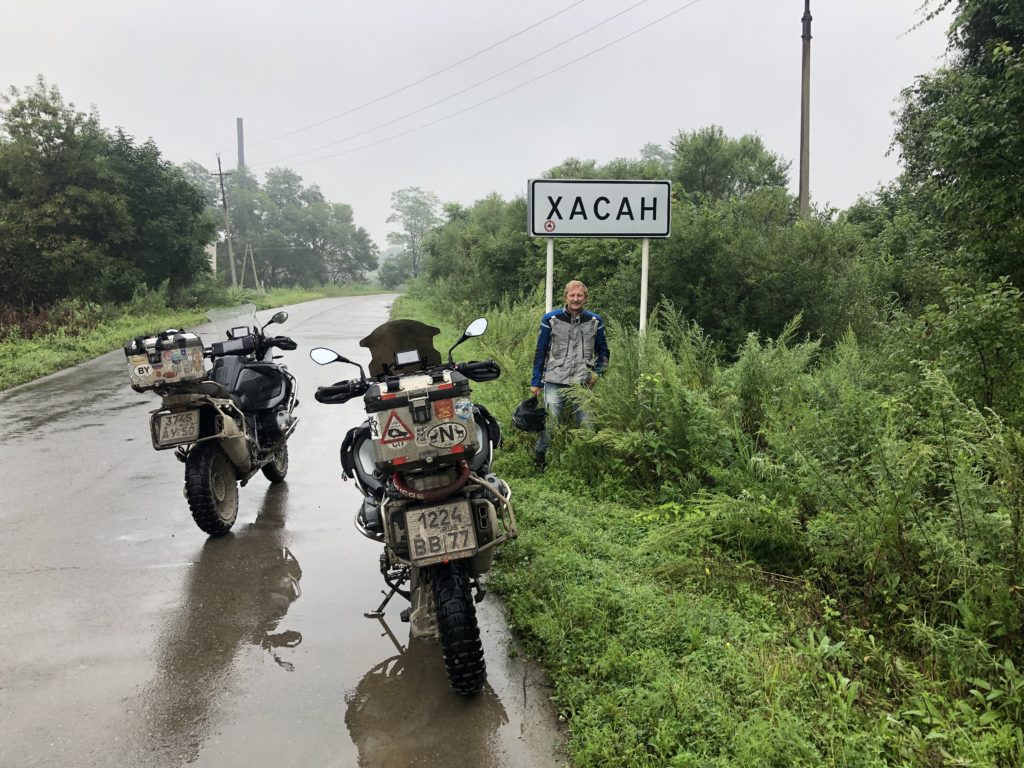
And if you decide to continue your way along a terrible ground road that resembles a forest track about 10 km long, then you will reach the coast of the Sea of Japan. This is the southernmost point of the Russian Primorye. There is no further road.
A narrow-eyed border guard will watch you attentively from the tower and only the noise of sea waves, crashing against the rotten sides of dozens of fishing schooners washed ashore by a storm, and the seagulls' cries will break the silence.
It is a fantastic sight!
I experienced similar feelings when I got to the lighthouse in the Rybachy island for the first time many years ago.
The edge of Russian land.
42°20′57.68″N 130°44′23.57″E
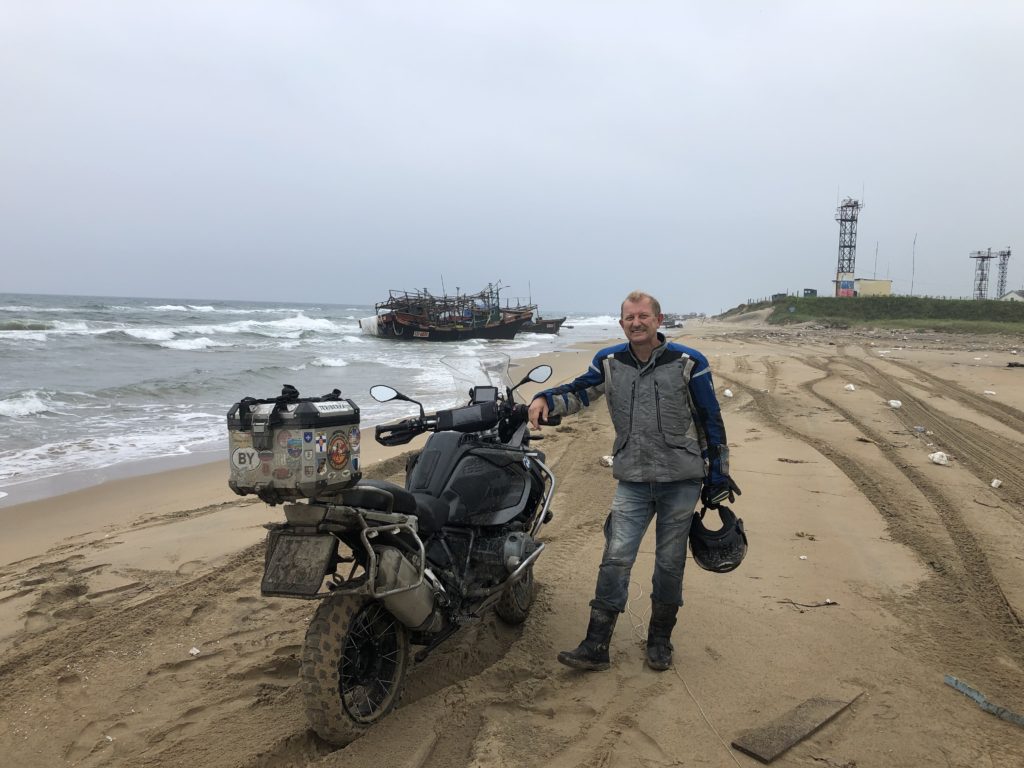
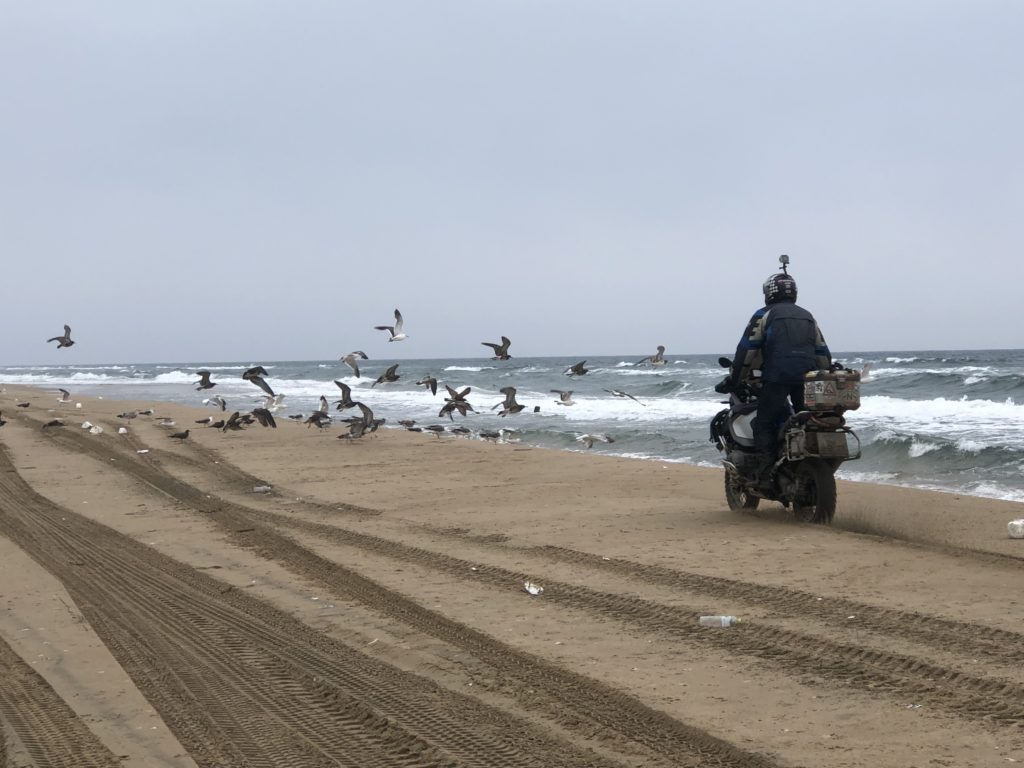
Gamov Lighthouse
The rain was drumming all night at the roof of a small plywood house that we rented for one night for 2,600 roubles and left a deposit of 500 roubles for the reason: "the key not to be stolen." The amenities included two beds, two chairs, a table on the terrace covered with oilcloth, two benches near it and a small fridge.
My wet equipment, which had been hanging under the tent all night, became even wetter in the morning, so the process of putting it on wasn't pleasant, to say the least of it.
Having left the trunk and bags in the house, we went on a short journey without extra weights. Today's goal is Gamov Lighthouse, which is located in the peninsula of the same name. The road to it is unpaved, full of deep gullies, streams and stones flowing by them. Steep ascents come after descents. Sometimes there are areas with muddy clay. All in all, that was an interesting path!
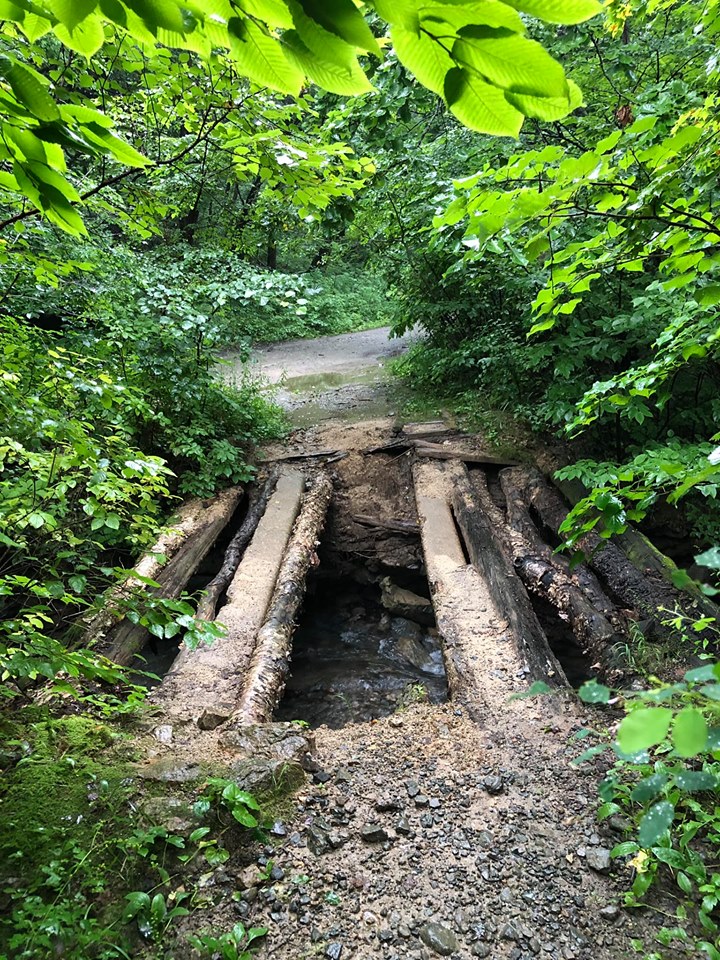
We went upstairs to the viewpoint, which must have offered a gorgeous view of Vityaz Bay, but we didn't see anything because of the fog. At the top it was so dense that it was difficult to see a person, who stood ten metres away. On our way to the lighthouse, we stopped at the fortified area of the coastal tower battery, which contained huge 180 mm guns. These arms had guarded the borders of our homeland from Japanese militarists till the 80s of the last century. A comrade in a navy uniform appeared from somewhere and allowed us to get inside this monster construction for 200 roubles. He also told us some information about the battery. I memorised one story. Once during a shooting practice somebody had forgotten to remove a truck from the site, so when the battery fired, it was thrown off a cliff into an abyss by an explosive wave.
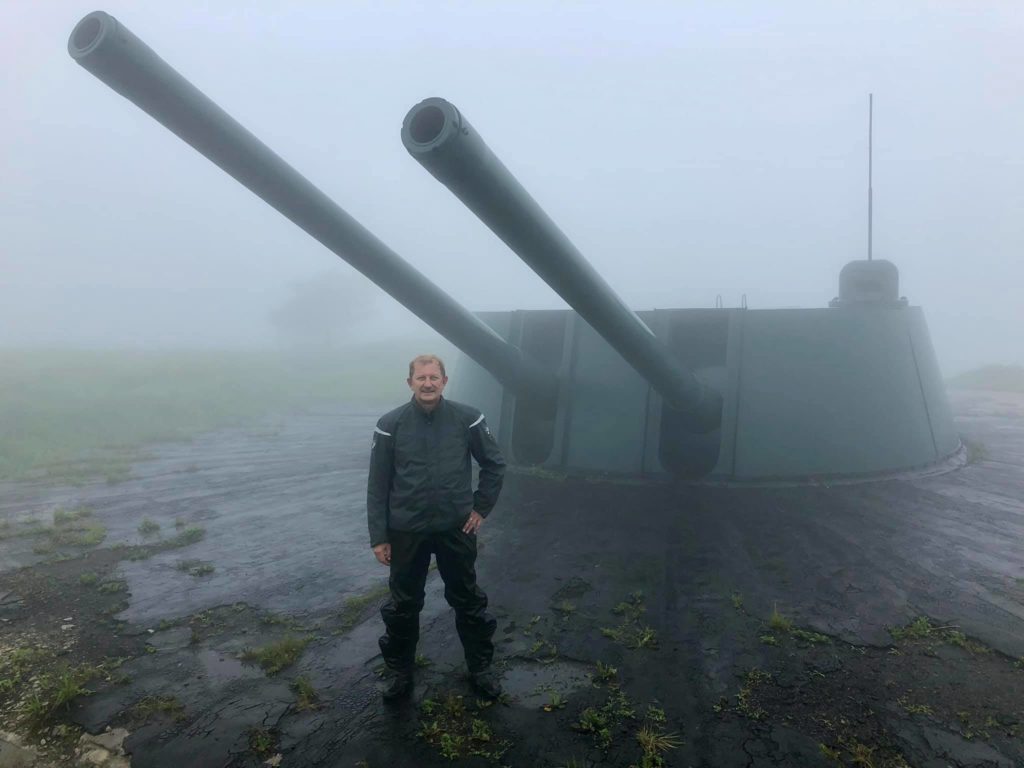
The lighthouse itself was built on a high rocky cape in 1906 and has been working since then till nowadays. That fact made an impression on us! We were lucky, because his guard, who was a harsh 50-year-old man, invited us to the territory and took us on an interesting tour just for 250 roubles per person. Now the lighthouse works in automatic mode and the flickering light from the rotating lense can be seen at a distance of 57 km in good weather! Surprisingly, four powerful light beams originate from one light bulb with a power of only 70 watts! However, this lamp is unique. Such lamps are not sold in the store.
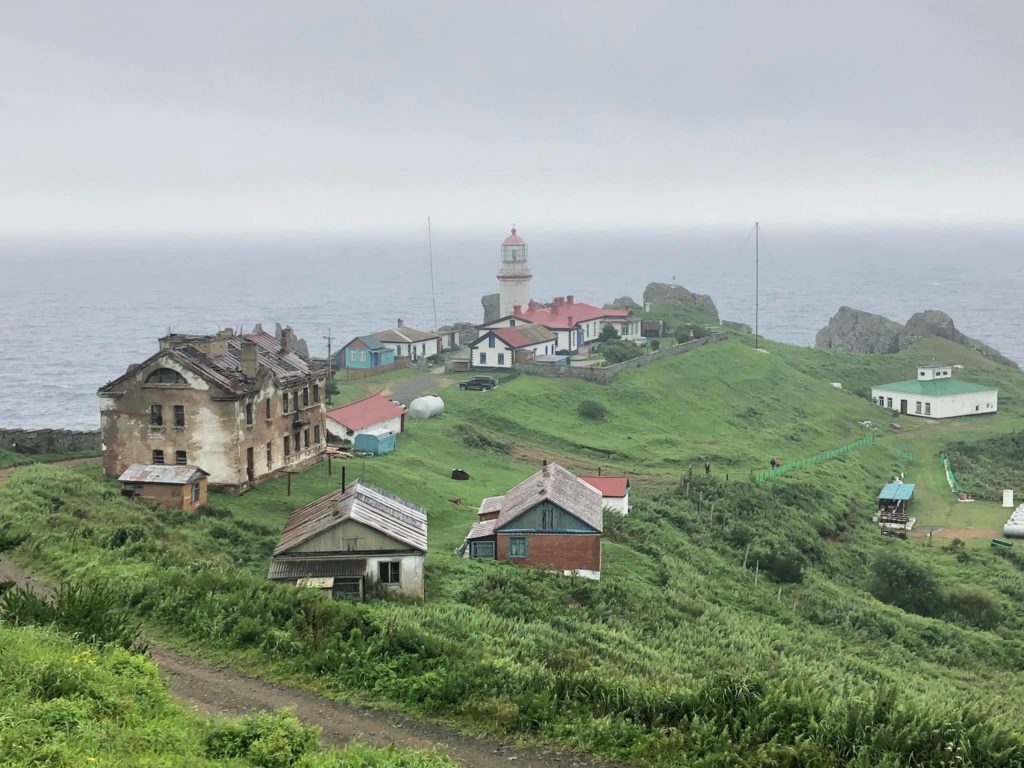
There is also a bell of the same age as the lighthouse. It used to give a sound signal during poor visibility. But it is not exploited anymore. Now ships have different advanced systems for orientation in space! :)
We climbed up the spiral staircase right into the heart of the lighthouse (or rather, into its head) and took a photo of ourselves with a huge lense in the background. The guard strictly forbade touching the lense. After saying goodbye we rode back.
We arrived in Vladivostok when the rare sun had already set down the invisible horizon.
These are the Vladivostok Fortress and the bridge, which leads to an island named Russian.
NAKHODKA
We drove the last 100 km distance from Vladivostok to Nakhodka under incessant rain. The road was far from a good highway. There was only one lane, many sections were under repair. Dump trucks pulled the clay along the path with their wheels. The traffic was pretty dense. When you follow a truck, a whirlwind of dirty brown fog covers you completely and flows down your windshield, helmet, raincoat and boots. From time to time I tried to brush all this shit off the visor with my glove and find a gap in the oncoming lane or go the truck around at the roadside.
Suddenly, Nakhodka appeared on the horizon after we crossed the top of the hill. The town was compactly located around a huge bay of the same name and surrounded on all sides by hills, the tops of which rose to the fog.
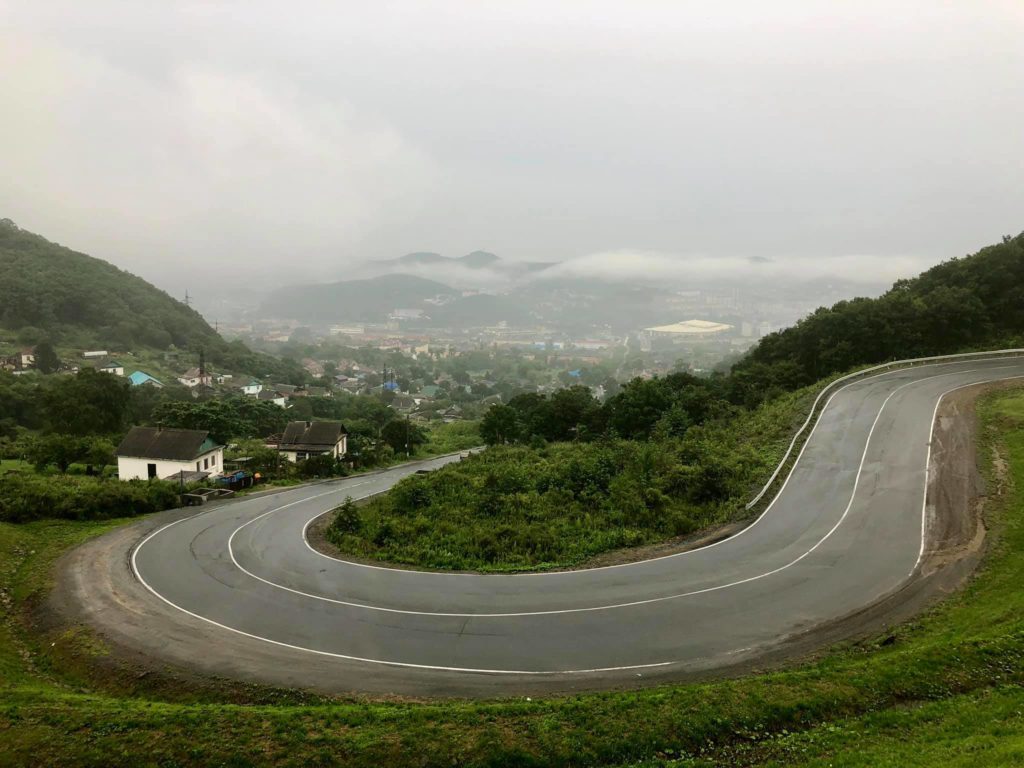
Nakhodka is a port city, therefore, almost the entire coastline is a port infrastructure. In the liers you can see the docked bulky cargo carriers, whose holds are being filled up with thousands of tons of coal by the tall cranes. The spoil tips are everywhere. There are warehouses, sheds, open parking lots with the equipment imported from Japan, wagons and trucks. Everything is moving, rattling, clanking and rumbling.
Nakhodka is a cargo port, which specializes in coal transshipment. That's why there are no passenger ships and ferries in it.
You can spot a small town nearby Nakhodka, which is called Wrangel. This one is a port too, but it is used for the shipment of oil.
There are a dozen tankers and cargo carriers placed in the roadstead in the bay.
We even found a sandy beach there. However, that day it was deserted, since the weather wasn't fine enough for a beach holiday. Anyway, the water in the bay is clean and there are no oil stains or garbage in it.
If it were not for the mountainous landscape, the port and the sea, then Nakhodka would look like any other small town in Russia. The houses, streets, schools and shops are the same. But it is the sea and the mountains that make Nakhodka a unique and very beautiful place in the east of the country. And what gorgeous views of the town and the bay you can experience from the tops of the nearest hills!
We were very lucky with the guide. Sanya, a friend of my friend, met us and in half a day together we visited all the most exciting locations and climbed to the tops of all the hills. In addition, Eugene, his childhood friend, sheltered us in his chic, brand-new built cottage with a large aquarium, in which huge exotic fish swam. :))
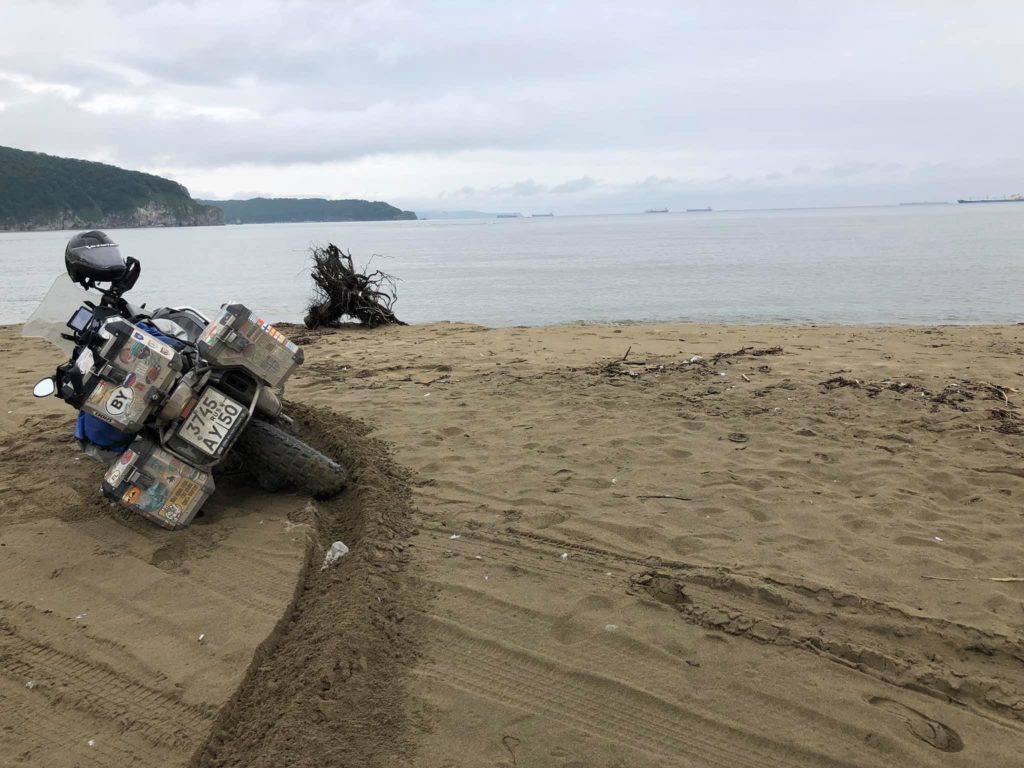
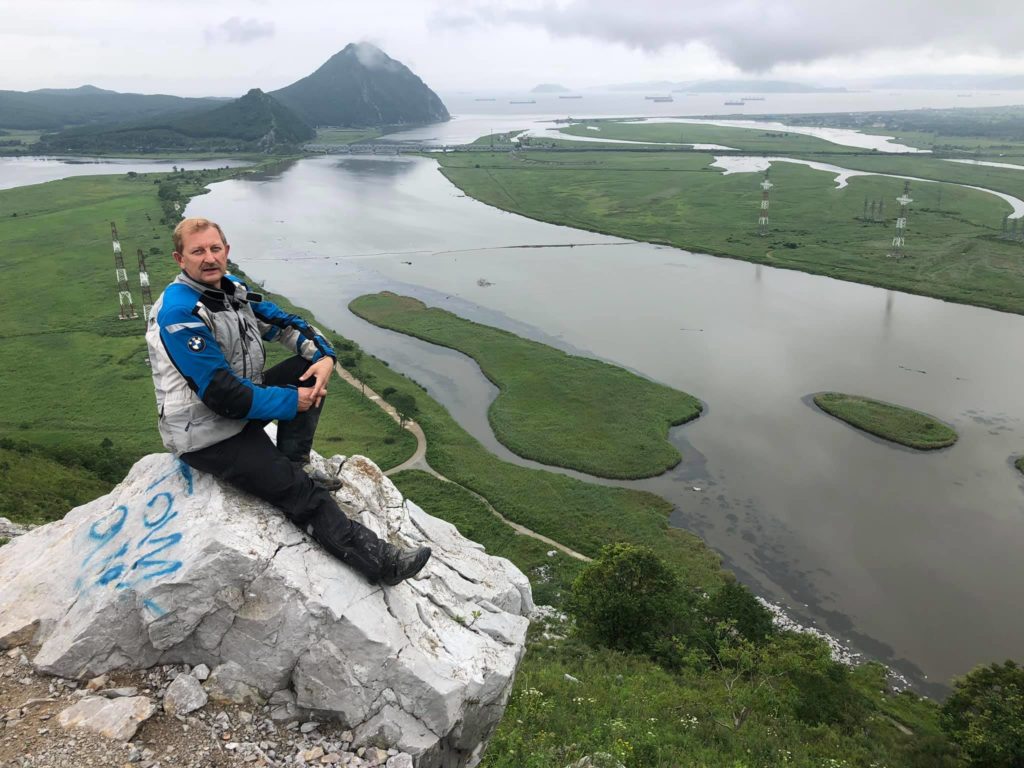
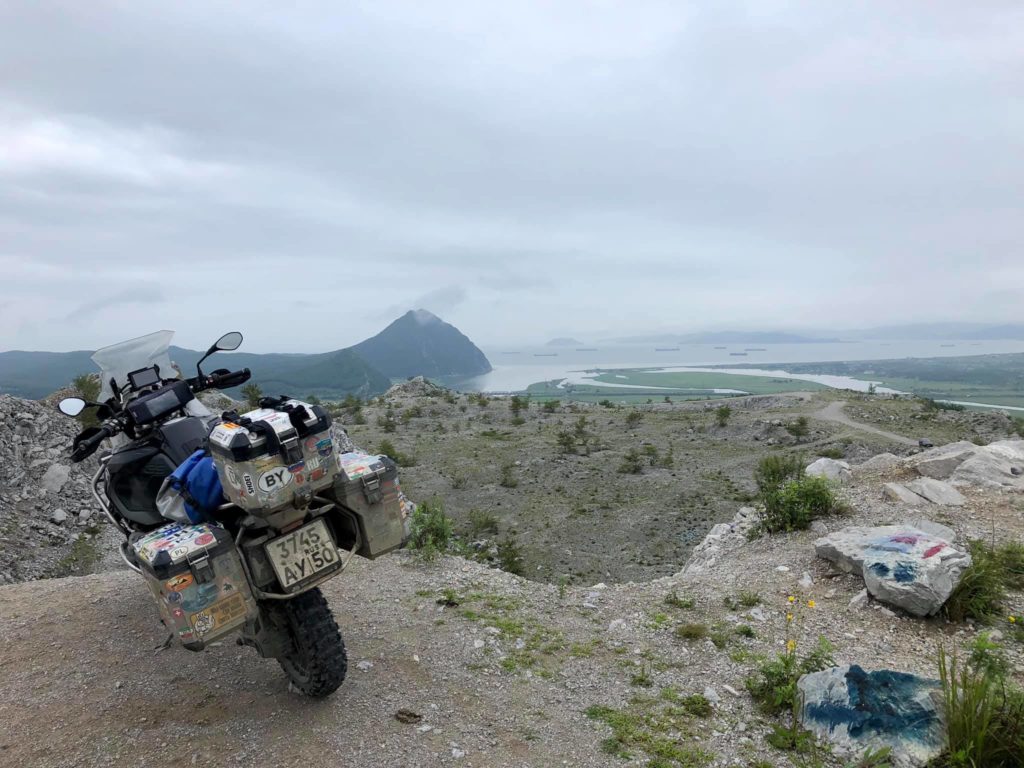
USSURIYSK – KHABAROVSK
I suppose, Primorye will be washed into the ocean tomorrow or the day after tomorrow. It will sink together with its houses, bridges, bad roads, bears, the Chinese people and boiled corn, which the locals offer along the roads for 80 roubles per portion.
Something in this world must have gone wrong. It's like the Pacific Ocean has moved to the sky and it is now pouring back out.
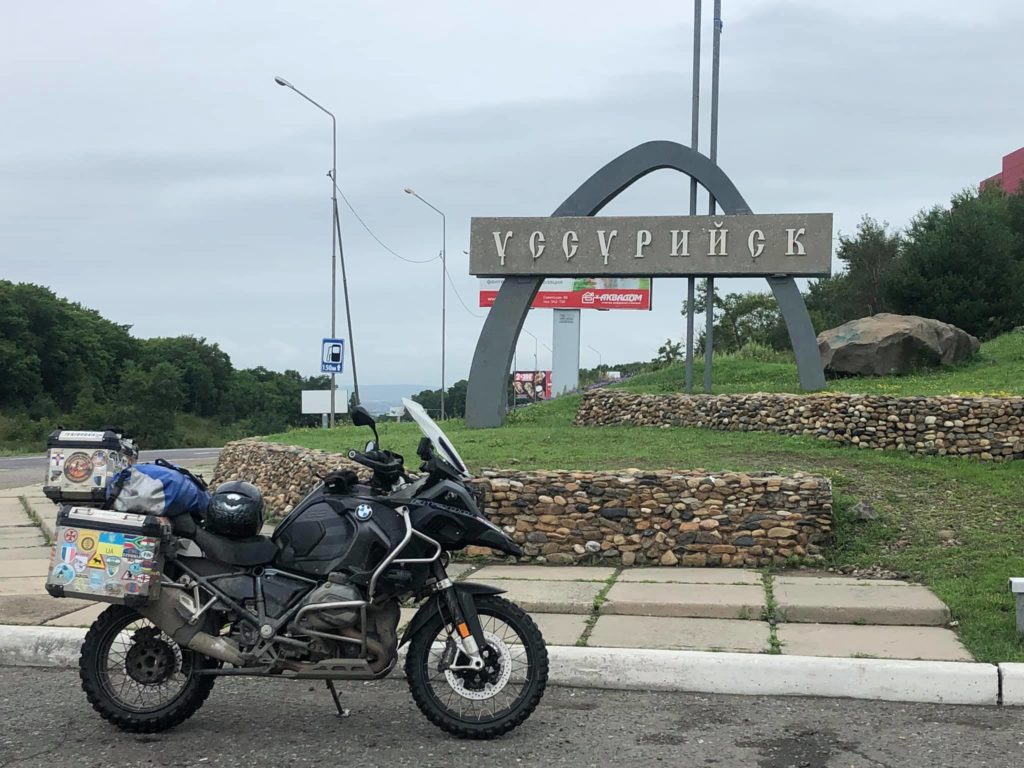
In the morning we left Ussuriysk, a town that hasn't got anything outstanding. At least that's what several residents answered on my question: "What should I see in your wonderful town?". As a result, I took a photo at the main entrance of the Suvorov's Military School (hello to all Ussuri cadets from their Alma Mater!) and set off for Khabarovsk. I experienced 50 km of quite a good road, the most part of which I was riding (or rather, sailing) in the pouring rain, and by the evening I reached the capital of Khabarovsk region, which is also one of the largest cities in the Russian Far East.
KHABAROVSK
Today we went more than ten kilometres on foot along the streets of Khabarovsk and sailed the same distance by a leisure boat down the Amur.
In my personal rating, Khabarovsk is one the top five cities of Russia in terms of uniqueness, beauty of architecture, landscaping, tidiness and the historical background as well.
There are wide avenues, tiled sidewalks and granite (!) borders, a lot of elegantly decorated flower beds, a magnificent embankment with bicyclelanes. Marble fences, well-groomed monuments and historical sites make a very pleasant impression about the city despite the bad weather and a downpour in the afternoon.
I enjoyed visiting the local museum very much. We casually ran upon it and went out only when we were politely asked to do it due to closure. There was a huge and very interesting exposition, which occupied several floors. If you happen to be in Khabarovsk, make sure to have some time to visit it. You won't regret it!
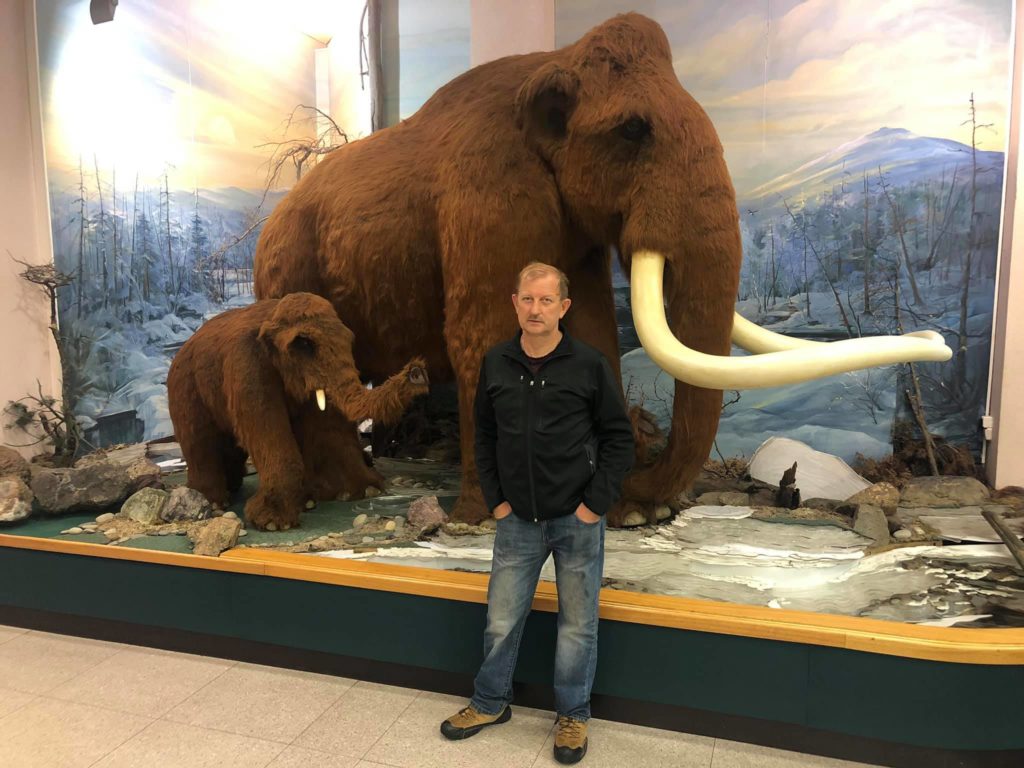
Tomorrow we're leaving this wonderful city and continuing our way. However, it is not clear yet, in which direction we will go. It turned out to be not so easy to reach Sakhalin as we had thought. The ferry ticket should have been booked a month in advance. Now everything is sold out. If a miracle does not happen tomorrow, then we will continue our journey to the west and visit Blagoveshchensk.
VANINO
The Khabarovsk-Vanino highway is very unpredictable and dangerous. The excellent sections of the road can abruptly end and turn into terrible ones with huge pits on it.
It took me five hours to overcome about a 400 km distance from Khabarovsk in a downpour. My raincoat didn't cope with such streams of water and I was once again soaked to the bone. In addition, the section of the terrible Lidoga-Vanino road, which is 325 km long, loomed between the taiga hills and turned out to be completely deserted. There wasn't a single village or petrol station. And Icouldn't have predicted it, so I ran out of gasoline when it was exactly 100 km to Vanino left. I was helped by a team of road workers, who shared fuel with me, let me warm up in their cabin and treated me to a cup of tea. And they refused to take any money!
Vanino is a village on the shore of the bay of the same name with a population of 15 thousand people. Do you remember the song "I remember that Vanino port"? Indeed, there was a transit point, where in the 40s and 50s the convicts were taken by rail for subsequent shipment by sea. Then they were sent either to Magadan for the construction of the Kolyma highway, or to the camps of Dalstroy. And the village Vanino itself was built with the labour of convicts: prisoners of war and military personnel. This is a place with a dark past and history.
The town Sovetskaya Gavan (the Soviet harbour) is located 40 km from Vanino and there the Baikal-Amur Highway ends. This is also a port town.
I walked around Vanino and made an impression about this village. Actually, if you look at the map of Russia, Vanino seems to be a wild and melancholic place (and, in fact, it is). Of course, it's not so deserted as Oymyakon or Tomtor on Kolyma, for example. There are schools, a hospital, a house of culture, which is guarded by statues of sad lions, shops of cheap Chinese goods, chemists and a large square in front of a gray nondescript Administration building. Surprisingly, there's no monument to Lenin on the square. Locals say there has never been such a monument, which is weird. But on the roof of this building you can see a lighthouse of red light and there are two more lighthouses in the main street, which leads from the square. Apparently, when ships enter the bay, the combination of these lights shows them the way to the port.
The port is buzzing and operating day and night. Coal, timber and oil are being loaded onto moored ships. Alumina is being unloaded for subsequent delivery by railway to aluminum plants in Krasnoyarsk. The ferries go from Vanino to Sakhalin, and we were going to cross the Tatar Strait that way, but it turned out that fate was against it…
The accident…
It had been raining continually since the morning. Everything got wet: the road, the forest, the hills, the motorbike and me. It seemed that there wasn't a dry thing in the whole world. There were about 120 km of broken highway to Vanino left. That was planned to be our final destination of that day.
At one of the passes, I caught up with an old Mazda taxi, which suddenly slowed down on a free road. I changed lanes and started overtaking it. When the car was about three metres away, it suddenly turned sharply to the left directly in front of me, blocking the road. My speed was somewhere at 60…70 km /h and I took it even further to the left and almost managed to squeeze into a small space between the Mazda and the metal bump, but the driver continued to move and hit me in the right trunk. The motorbike was thrown onto the bump, then turned over and the next moment I…
When I regained consciousness, I saw four people in front of me. Among them was a woman and a child. They asked me something, but I didn't understand. They were the passengers of that taxi. I tried to get up but fell. I felt dizzy and had such a severe pain in my left shoulder and side that I couldn't take a breath. After a while I got up and staggered to the motorbike, still not understanding clearly what had happened. My motorbikey was lying in the middle of the road, the engine didn't work, but the headlight was on. I tried to turn off the ignition, but for some reason the button did not respond. I sat down next to the motorbike on the ground, leaning on it with my back. My shoulder hurt. My head was buzzing. There were no people. Raindrops were hitting my face and I tried to lower the helmet visor, but it wasn't in its place. A few metres away from me the Mazda driver was collecting some fragments and trying to put the damaged bumper in order. Gradually I began to figure out what had happened: I couldn't raise my left arm probably because of a collarbone fracture. I also felt a pain in my side and hoped that my ribs were intact. I got up and made an attempt to lift the motorbike. But no result. Then the car driver approached and together we managed to pick up my motorbikey. I asked him why he had done that trick. He answered that he had been driving the pit around and hadn't noticed me.
After 20 minutes Oleg came up. He left Khabarovsk later and caught up with me in this "lucky" place. There wasn't any communication link at all. We asked the driver of a passing jeep to report about the accident to the traffic police and tell them the coordinates of the place. We started waiting. The time was 17.40. After an hour it began to get dark and it was raining without ceasing. Both Oleg and I got cold. The traffic police patrol arrived five hours later, one more hour was spent on paperwork, measurements, etc.
Oleg left for Vanino to return by some car and take my motorbike back. After the registration of an accident I was given a lift too and reached the village at 2:30 a.m. Having frightened the administrator with my look, I stumbled into the lobby of the hotel and asked for a room. The woman immediately handed me the key and asked a sleepy security guard to show me the way.
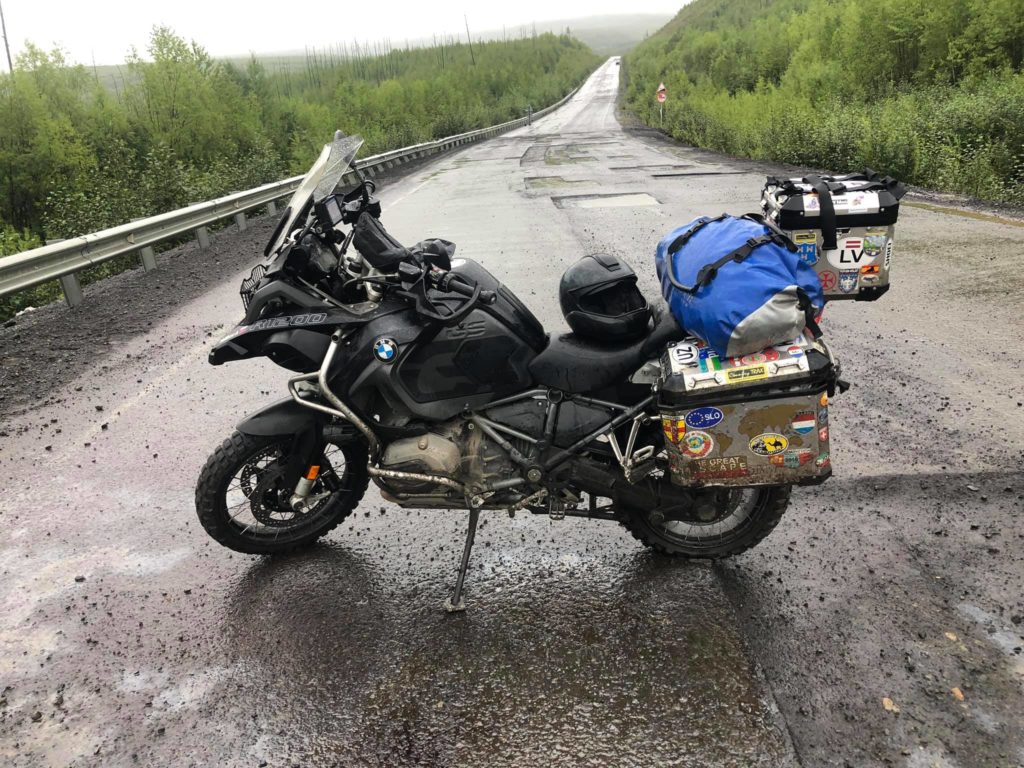
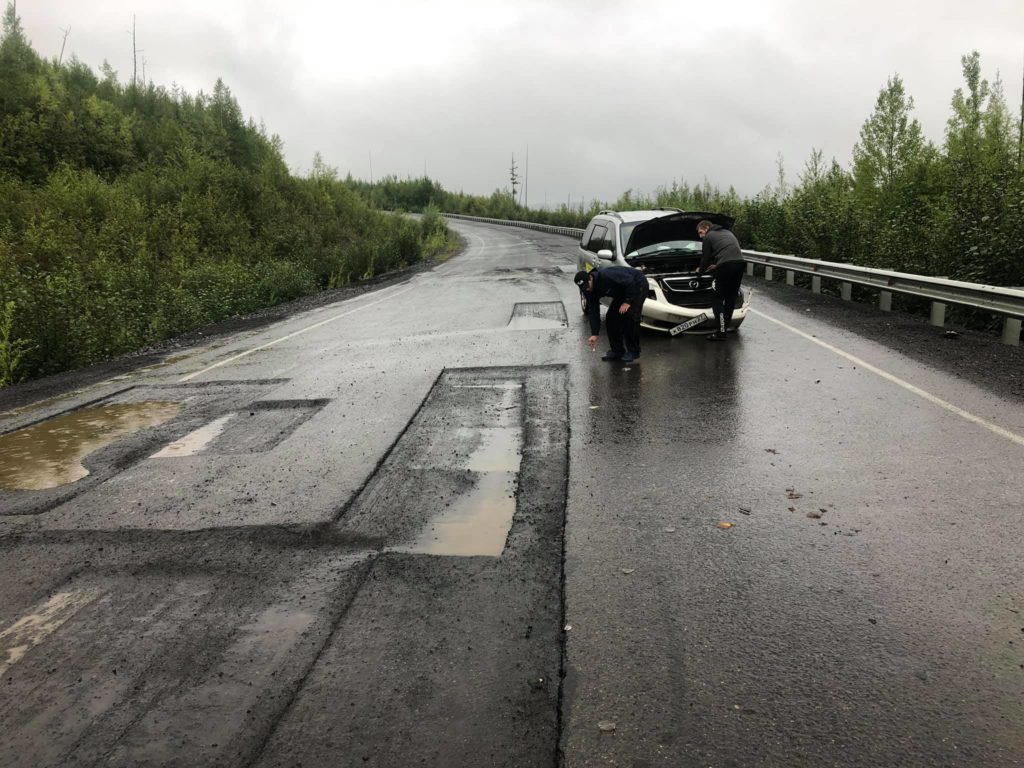
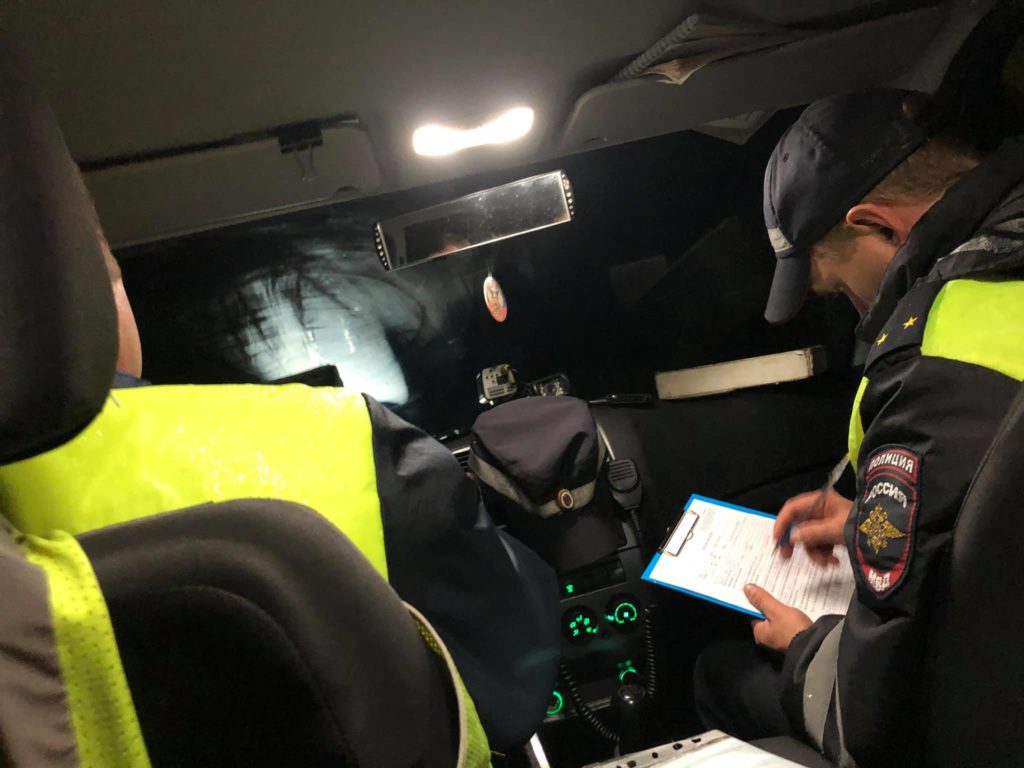
Oleg returned by my motorbike only in the morning.
comments powered by HyperComments Cap-travel.ru
Cap-travel.ru